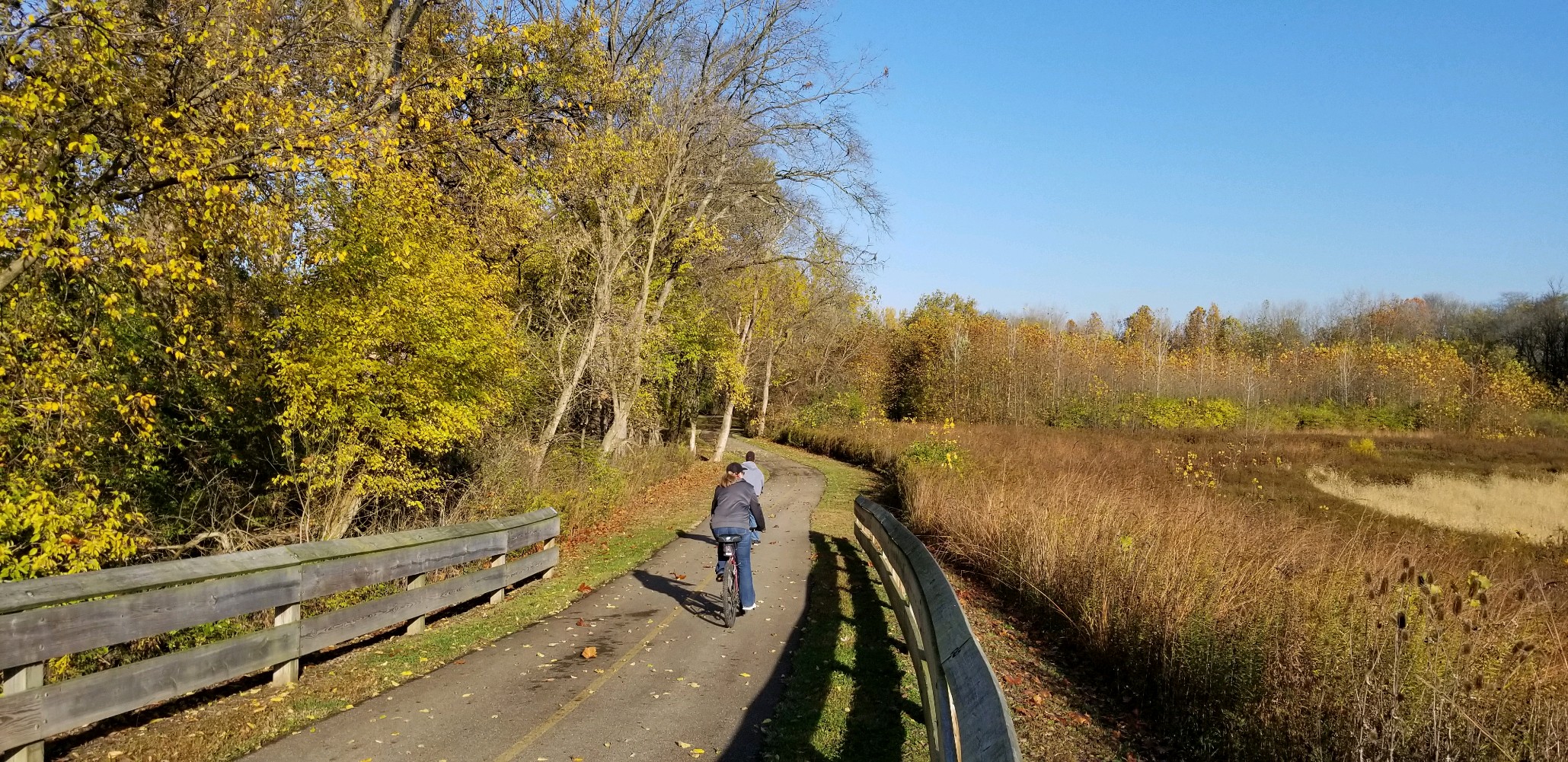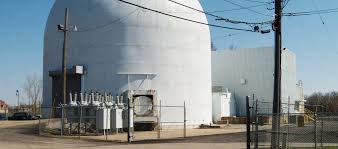Cycling to the City of Piqua - America's First Atomic City
On a picture perfect day this fall, I hit the Great Miami River Recreation Trail and cycled from Troy to Piqua and back. It’s about a 19-mile round trip. If you haven't cycled this part of the trail, I encourage you to explore this section.

The trail is tree lined and shaded (in summer) most of the way, and it hugs the Great Miami River for a good part of the trip. You get to cycle over the river when you pedal across the beautiful Robert J. Shook Bikeway Bridge located near the Miami County Park District's Farrington Reserve. And about nine miles into my ride, I stopped at a white, dome-like building near Piqua's Water treatment plant. At first glance, it looks just like a small version of one of those road salt storage buildings. But I found out that it served a totally different, and much more important, purpose.
That building is a critical part of the U.S.'s energy production history and the reason that Piqua was once known as America’s Atomic City. It housed the first city-owned nuclear reactor from 1963 and 1966. The project was the first 45.5 megawatt, organically cooled and moderated, thermal reactor was built by the U.S. Atomic Energy Commission (AEC) — predecessor agency to the U.S. Department of Energy (DOE) as a demonstration project.
By the time it opened, the plant was producing 260 pounds of enriched uranium. That is the energy equivalent to 160 million pounds of coal-producing 11,500 kilowatts of energy. The 27-foot-tall vessel was made of low-carbon steel and its 7.6-foot-diameter interior had an average wall thickness of 2 inches. The reactor produced 150,000 pounds per hour of 550°F superheated steam, at a pressure of 450 pounds per square inch. The steam was pumped through footbridge pipes across the Great Miami River to turbo generators in the Piqua municipal power plant to augment the city’s power supply.
The experiment encountered some obstacles. The plant was shut down on at least two occasions to refuel the reactor core. After the second closure, the reactor was shut down for almost two years due to mechanical problems. The plant quickly became outdated and in December 1967 the federal government terminated its contract with Piqua and funding was shut off. According to the City of Piqua, when the plant shut down the enriched uranium fuel rods and high-level radioactive waste were shipped to storage dumps in New York and Washington State. The reactor was then sealed in steel, silica sand, and 8 feet of concrete beneath the dome.
Visitors from around the world including Denmark, England, France, Belgium, and Japan traveled to Piqua to learn from the experiment. Piqua’s initiative created the first commercial organic moderated and cooled reactor in the world, the first reactor to generate superheated steam, and the first reactor to be operated by a municipal power system.
Find Your Way - to the Atomic City of the Great Miami Riverway!
